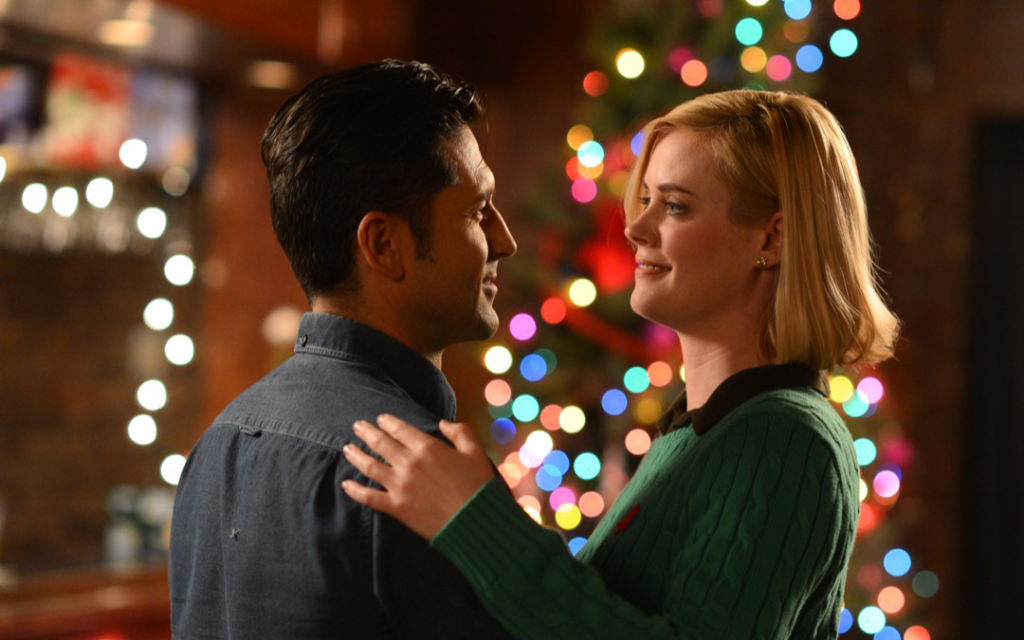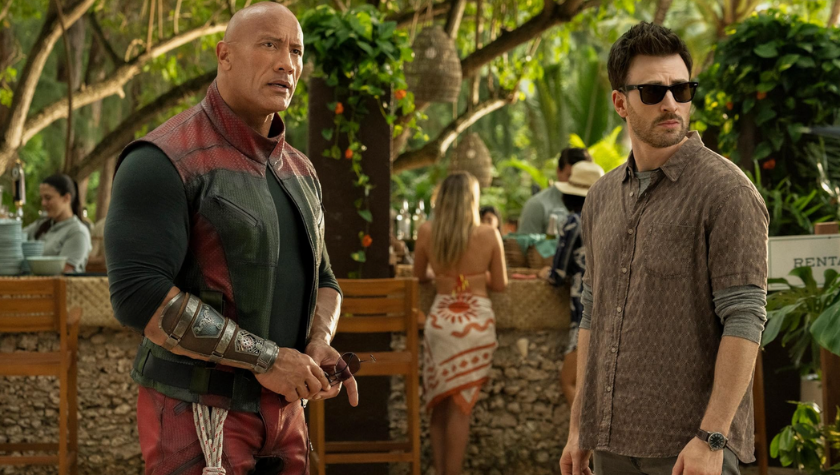Take 5: Writing lessons from the Christmas Rom-Com 'Hotel for the Holidays'
December 5, 2022
Holiday romantic-comedies are a big business. These films appear on multiple cable channels and streaming services with each one trying to maintain originality while also having to play off similar tropes. Hotel for the Holidays is a new light-hearted Christmas movie following a hotel manager who is eager to open a new property as part-owner, but she wants to keep this a secret from her close friends and staff at the hotel. Everyone seems to have their own secret though and with a little Christmas magic, it all gets revealed and everyone comes together – as it’s supposed to.
Here are five screenwriting takeaways you can learn from the Amazon Studios Christmas feel-good film Hotel for the Holidays.
- Introducing Many Characters in Minutes
Hotel for the Holidays has a considerable number of characters that they need to introduce in a short period of time. The protagonist of the movie is Georgia (Madelaine Petsch) who is the hotel manager looking for something more. She is the one that interacts with most people and the catalyst for meeting most of the supporting cast.
There are two sets of people in the hotel: employees and guests, each one distinguishable in their own way. However, they also have one single thing in common that brings them to this spot: they want to get away for Christmas.
Georgia interacts with the hotel guests, which include a former prince who has announced renounced the throne, a pop singer and a guest with a dog looking to escape for the holiday. Meanwhile the hotel employees interact with each other and include a chef, housekeeper, maintenance worker and others, while preparing for the annual Jingle Mingle – a singles networking event on Christmas Eve.
Just those few descriptions show how you can distinguish characters in a setting like a hotel, or even restaurant, school, hospital or wherever you set your story. Hotel for the Holidays provides a road map of how you can introduce an ensemble cast in a way the viewer can differentiate the character roles and personalities while setting up the story.
- Every character has a secret
One key similarity between all the characters in Hotel for the Holidays is that each one harbors a secret. For Georgia, it’s her desire to own a hotel and knowing that the potential of this dream coming true will devastate her employees. Another secret is held by Luke (Mena Massoud) who is the chef at Hotel Fontaine and has a crush on Georgia. Two other employees have been dating but didn’t want it to get out.
Even the guests have secrets. Pandora (Kayleigh Shikanai), a pop star hiding from the paparazzi, who sheds her identity and ends up helping set up the Jingle Mingle event.
These secrets are a great way to add tension and conflict throughout the story.
Not all secrets are revealed at the end either. Georgia leaving the Hotel Fontaine is the catalyst for the beginning of the third act while, as what happens in holiday rom-coms, the two main characters who are supposed to fall in love do so at the end – in this case, when Luke reveals his feelings for Georgia.
Secrets are great to have in your story as it keeps your viewer attached to the story – if they’re in on the mystery, they’ll want to know what happens when it comes to light.
- The Romantic Formula in a Rom-Com
Everyone knows that by the end of a holiday romantic comedy the two main characters will end up together. But if you know the ending, why watch it?
Viewers want to go on a journey. It doesn’t matter that they know what happens at the end before watching it, they want to see how the characters get there. This means that the characters and plot must be compelling enough to get people to watch in the first place. It’s a concept as familiar as serialized TV — Doesn’t everyone know how shows like CSI and Law & Order will likely end?
In Hotel for the Holidays, Georgia is too wrapped up in her own business to fully realize that Luke is interested in her, even though she confides in him and he makes her lunch every day. From managing the problems of a hotel to finding ways of making her dream a reality, love doesn’t seem to have room to fit in.
It’s not enough that the pressures of the holiday and fear of being rejected keep these two apart, there must be one other threat: former Prince Raymond (Max Lloyd-Jones). Georgia What is actually business meetings between Georgia and Raymond are perceived as dates to Luke.
With all this confusion, stress and craziness of the Christmas season, will Luke ever show Georgia his true feelings? The viewer knows the answer. When writing your own story, remember that it’s the journey that your viewer wants to go on – the destination doesn’t always have to be a surprise.
- It all comes together
There isn’t a scene in the movie where all the characters are in a single location at the same time, until the end. Everything that has been building throughout the movie from the love interests to the revelations in one’s own life culminates in the concluding scenes of the movie at the Jingle Mingle.
What makes these final scenes satisfying is how the audience has been on the journey with each individual, learned their secrets and wants, and how it makes the party much better when all comes together. Everyone finds their voice, and in a romantic comedy, it’s a happy ending that makes the viewer feel good.
This is harder than it looks because you’re bringing together an ensemble cast of characters and setting up over the course of the previous 75 minutes how they add value and emotion at the end. Each journey needs to be mapped out, interacting with the various characters throughout, and all finally coming together.
- Keeping the budget low
It’s rare, if ever, that a budget on a Christmas romantic comedy will be in the millions. Even the most ambitious Hallmark films won’t cost more than $2 million. Keeping the budget low and manageable starts with the writer.
It starts with writing the script and managing these expectations early on. For a movie like Hotel for the Holidays, writers Maggie Lane and Margarita Matthews ensured there were few locations and scenes that involved only a few characters. This is an ensemble movie but the only time when more than a handful are in a scene together is at the end. By keeping the film indoors for a great deal of the time, it makes it easier to shoot off-season and less expensive than having to bring in fake snow – a benefit since many Christmas-themed rom-coms are shot all year.
As holiday movies grow in number every year, it’s a struggle to keep ideas fresh. Hotel for the Holidays provides a fresh take on a familiar genre while providing several screenwriting lessons for writers that create beyond this genre.
Hotel for the Holidays is an Amazon Studios production now streaming on Freevee.
Written by: Steven Hartman
Steven Hartman is an award-winning, optioned screenwriter. He was a Top 5 Finalist in Big Break’s Historical Category in 2019 and won Best Action/Adventure in Script Summit’s Screenplay Competition in 2021. He holds a Bachelor of Arts degree from Columbia College and had internships at Jerry Bruckheimer Films and Village Roadshow Pictures. Steve is a full-time writer and creative video producer by day and a screenwriter and novelist by night.- Topics:
- Screenwriting & Craft




